A natural history museum, it is solely devoted to shells and the mollusks that make them. Exhibits showcase shells from around the globe. The museum also serves as an information and reference center for international scientists and others interested in shells.
When entering the museum, the gift shop has a lovely array for shell-inspired items for sale.
One of the first exhibits we saw was about mollusks had this diagram. After seeing it, John has sworn off eating clams forever! I, on the other hand, have loved them since I was a kid.
The Worldwide Record-Size Shells exhibit is fantastic. Here are three of them: Queen Helmet, Triton's Trumpet, and Horse Conch. Also shown is the largest Junonia, a shell that is rarely cast ashore (but have been found on Sanibel beaches). Left-handed (coiling counter-clockwise) Junonia shells are extremely rare.
Shells found on Sanibel and Captiva are displayed as educational programs are offered to help you find shells here for yourself.
The centerpiece of the Great Hall of the museum includes spectacular shells from Japanese, Indo-West Pacific and other provinces. Also shown is a giant clam shell.
Above the showcases are these beauties: hairy triton, and horse conchs of various colors.
Many Florida fossil shells (mollusk now extinct) and their modern-day relatives are displayed, as well as information about the "original shell people," the Calusa. They too were gone by the mid-1830s, their demise primarily attributed to diseases brought to them by Spanish explorers.
Shells for Money is one of the most interesting exhibits here. Money cowrie (erosaria moneta) was the most widely circulated and longest enduring currency in the history of the world. The Maldive Islands off the coast of India are the principal source for the shells and was controlled by the royalty there for more than 1,000 years. They have been found in burial sites in Egypt dating back to 2700 BC believed to be a marginal "giver of life."
Why were cowrie shells used for currency? They are durable, uniform in size, easy to count/weigh/transport, found in abundance in one isolated location, and difficult to counterfeit. There is however, the tragic connection of money cowrie to the slave trade.
By the 1500s, cowries were being shipped to West African coasts to purchase slaves for sugar plantations in the West Indies. In 1667, a slave cost 400 money cowrie; by 1869, a slave cost 120,000. By the late 1800s, the international shell money trade died out, although it still was used in some areas of Africa, India and China into the 1900s.
An exhibit on the Shells in Architecture, Art and Human History showcases Sailors' Valentines, art created in Barbados and other Caribbean nations in the early 19th century by women for their sweethearts. These were created by women in Massachusetts and Sanibel Island. The detail of the work makes these exquisite.
Displays on buttons made from shells, cameos in jewelry pieces, and inlaid shell in Asian furniture can be seen. One of my favorite items is this free-standing shell flower arrangement, Shellabration (2012), by Goz Gosselin.
Below is a collection (Muller, 1774) of shells of the Linguus Tree Snail, a land-based snail. The second one is of emerald green snails (Rensch, 1931). Not all mollusks live in the sea!
Don't miss the tank with live mollusks. A volunteer there explained the specimens found in the water, and some were quite large. It was so interesting to watch them slowly move about the habitat.
I learned two new words today: conchology (the branch of zoology dealing with the shells of mollusks; and, malacology (science dealing with mollusks). We found this museum fascinating as we never realized how uneducated we have been about shells and mollusks.
But, just go to enjoy the unique beauty of each shell on display. It's definitely worth it!
Admission was $13/adult and $12/senior). For hours of operation, scheduled programs, arts and crafts classes, etc., check them out online at www.shellmuseum.org.

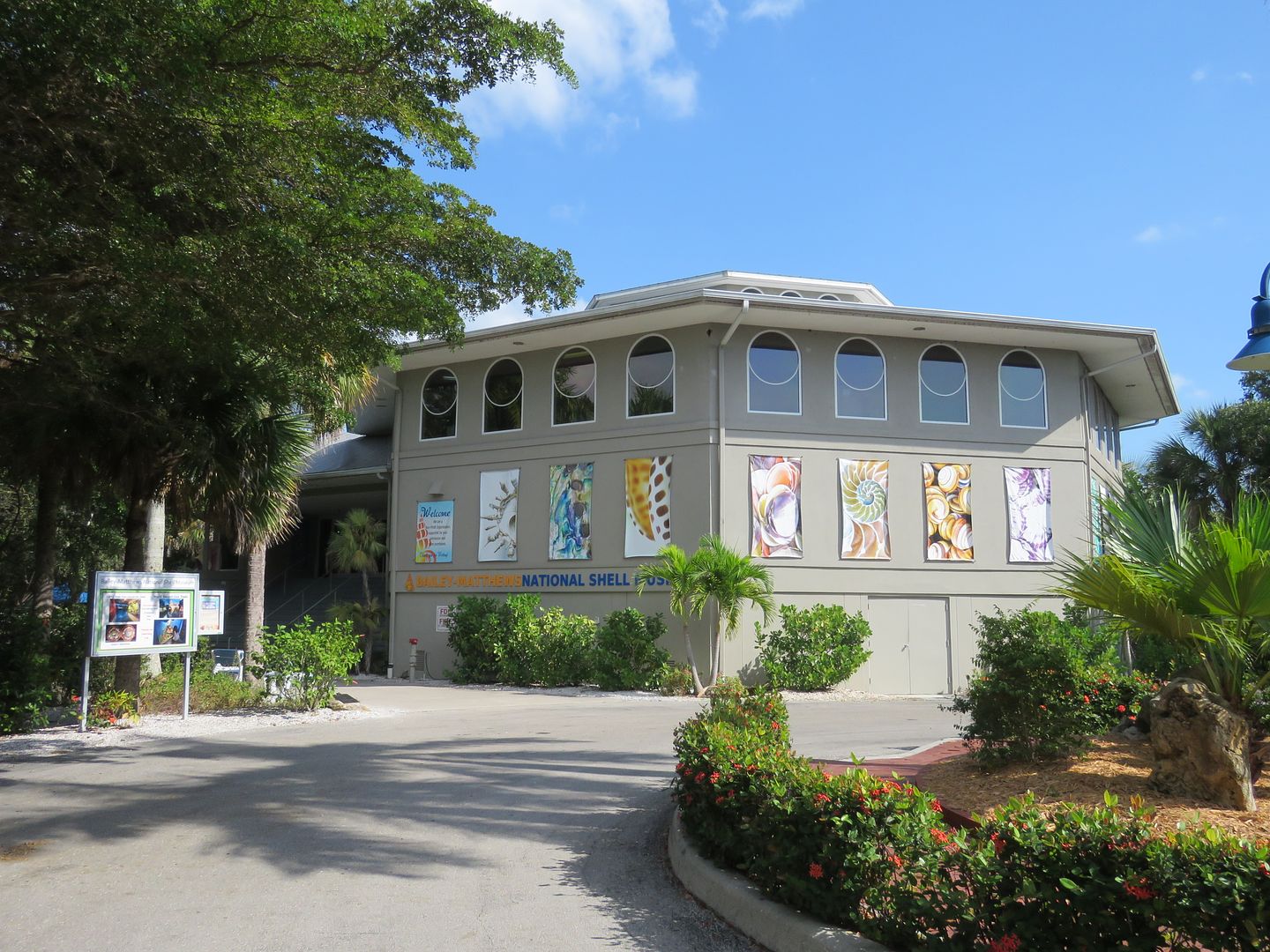
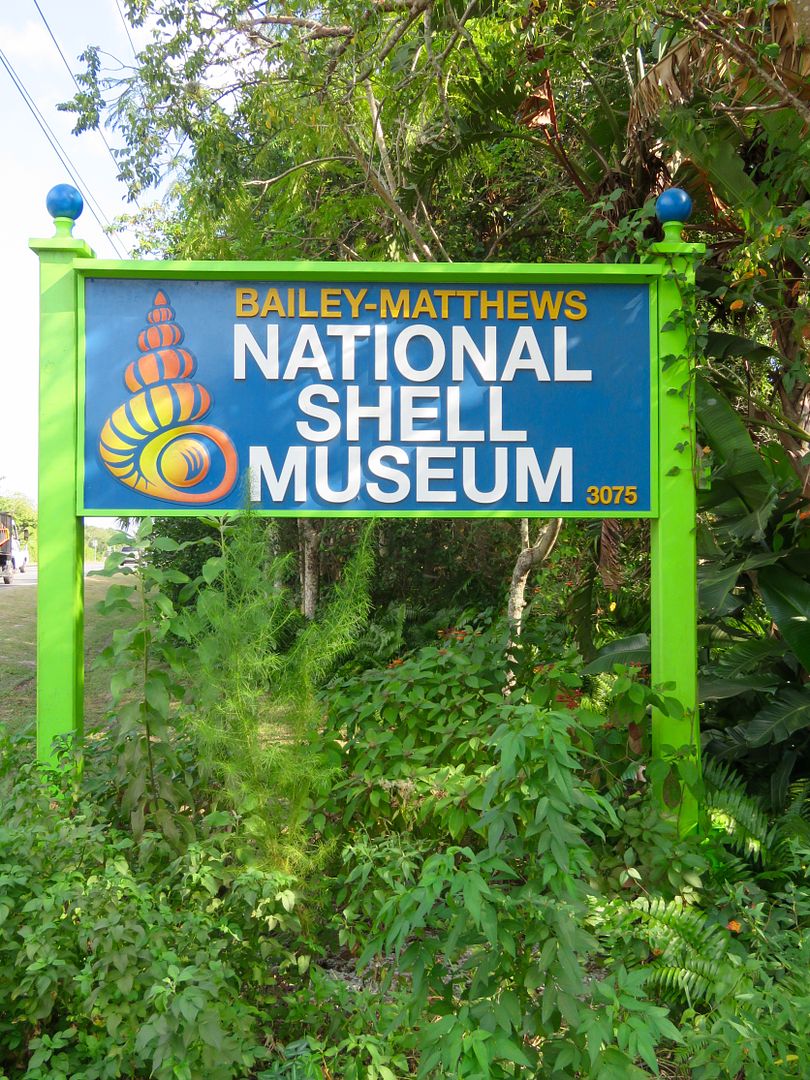
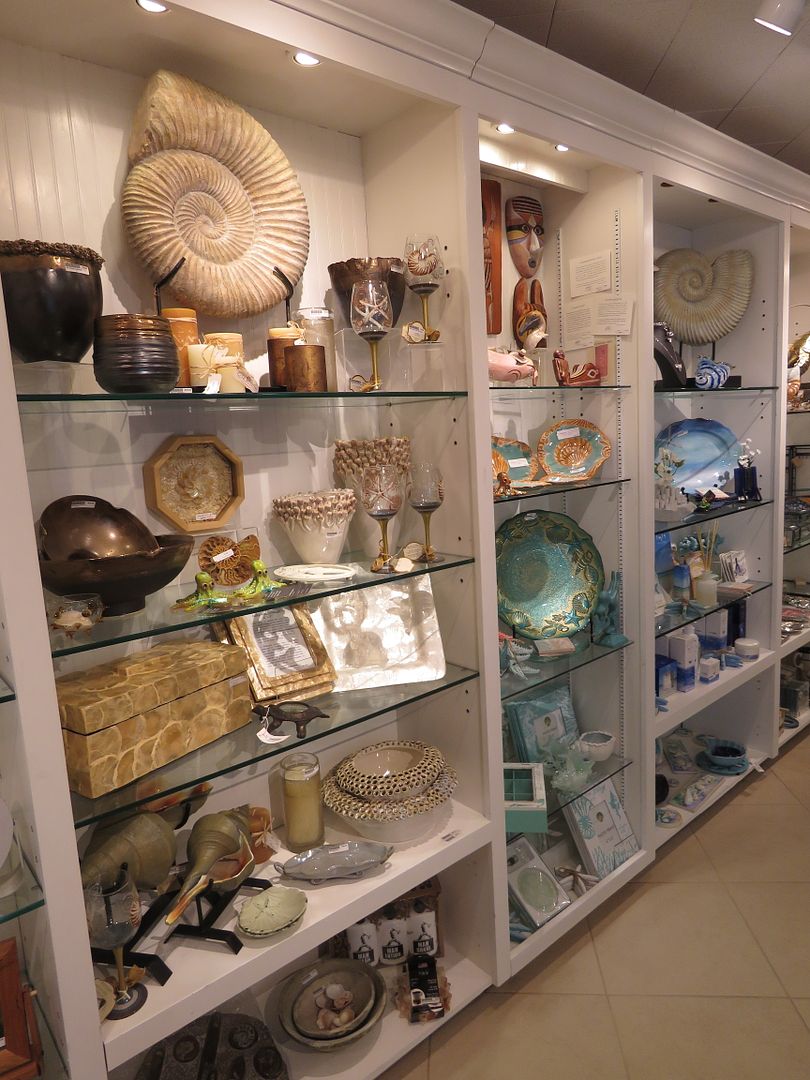
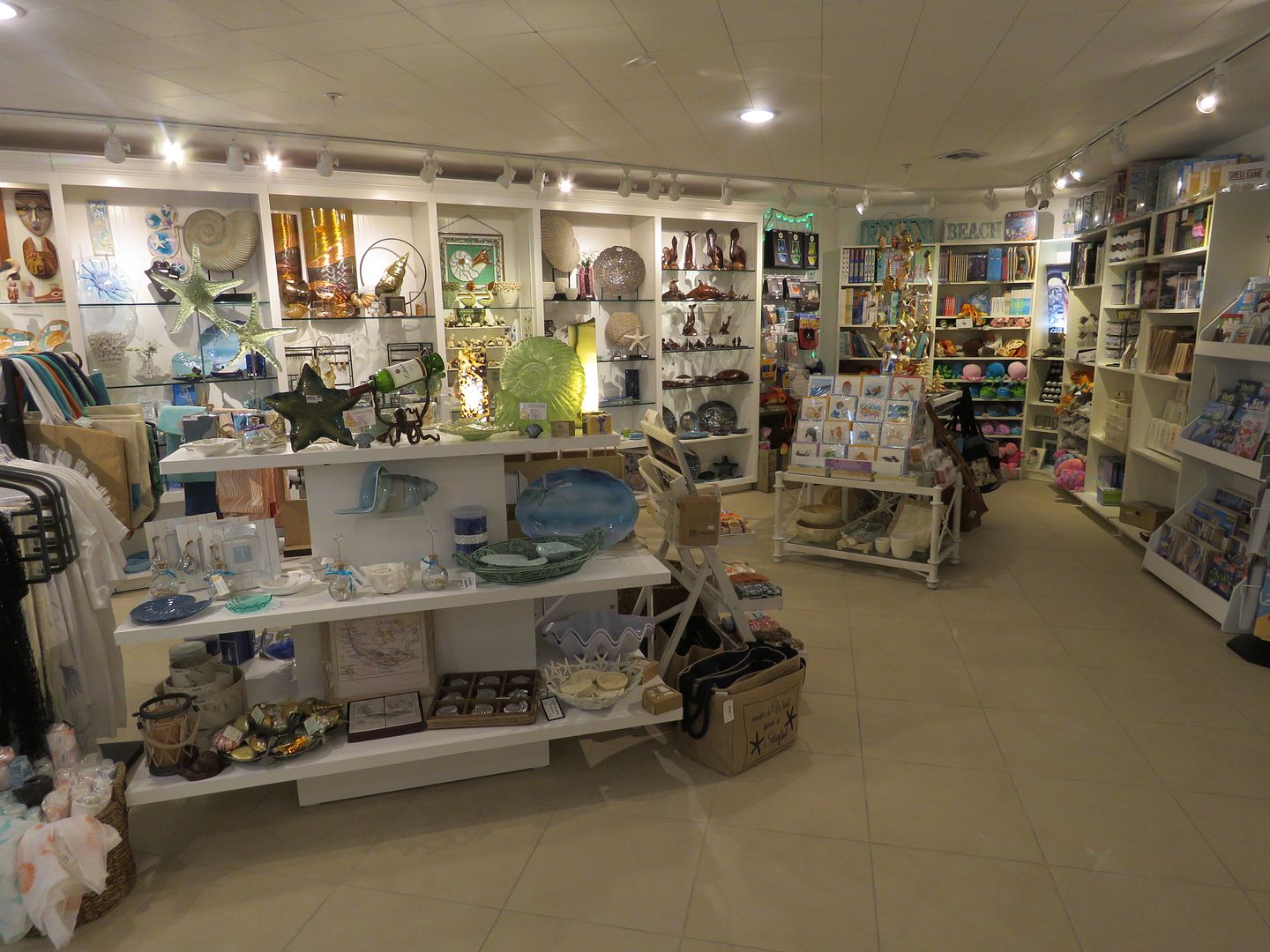
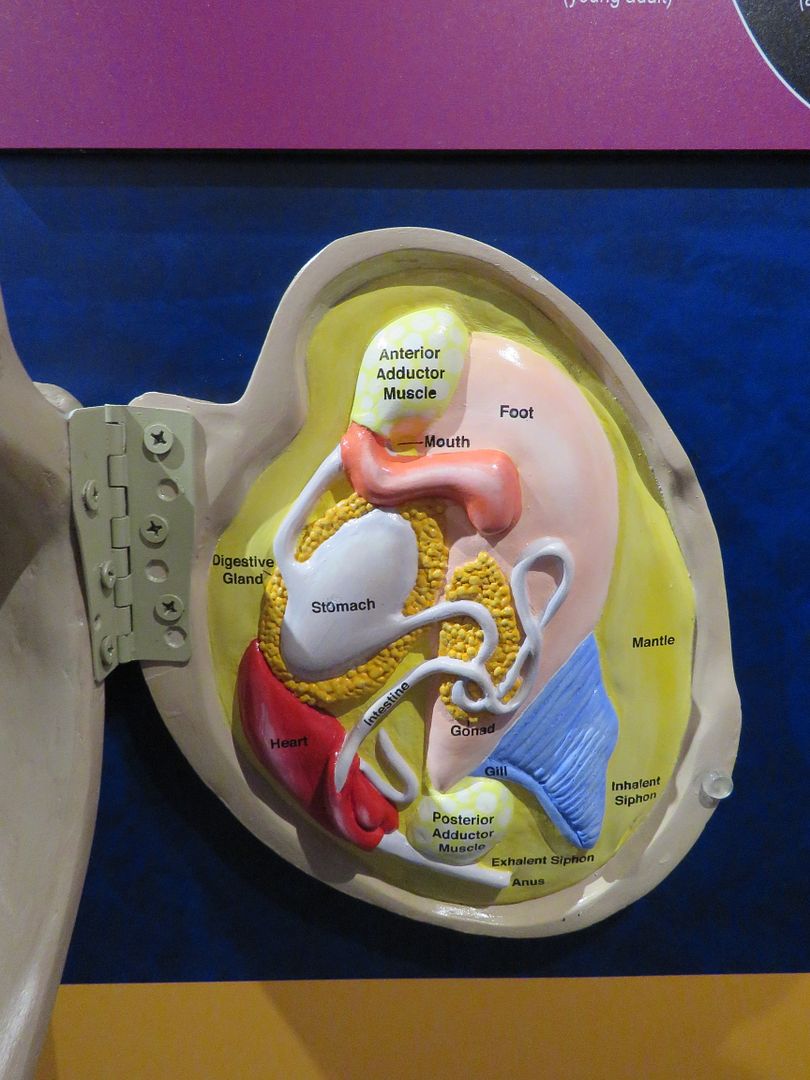
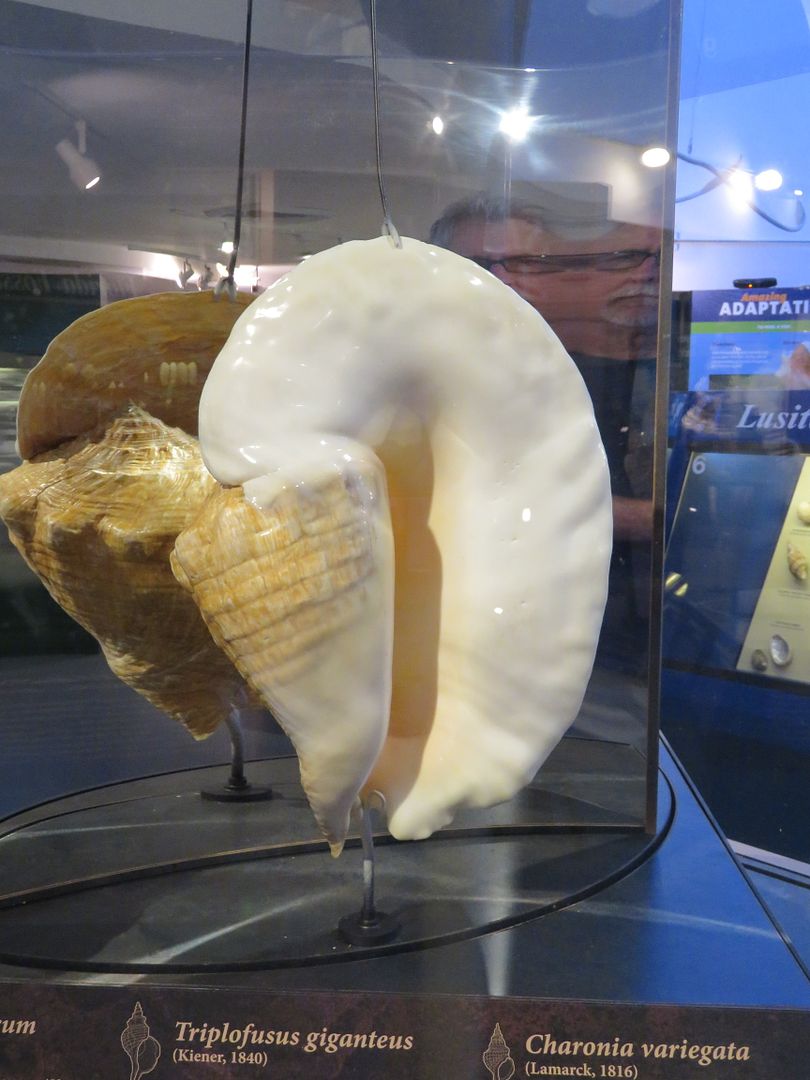
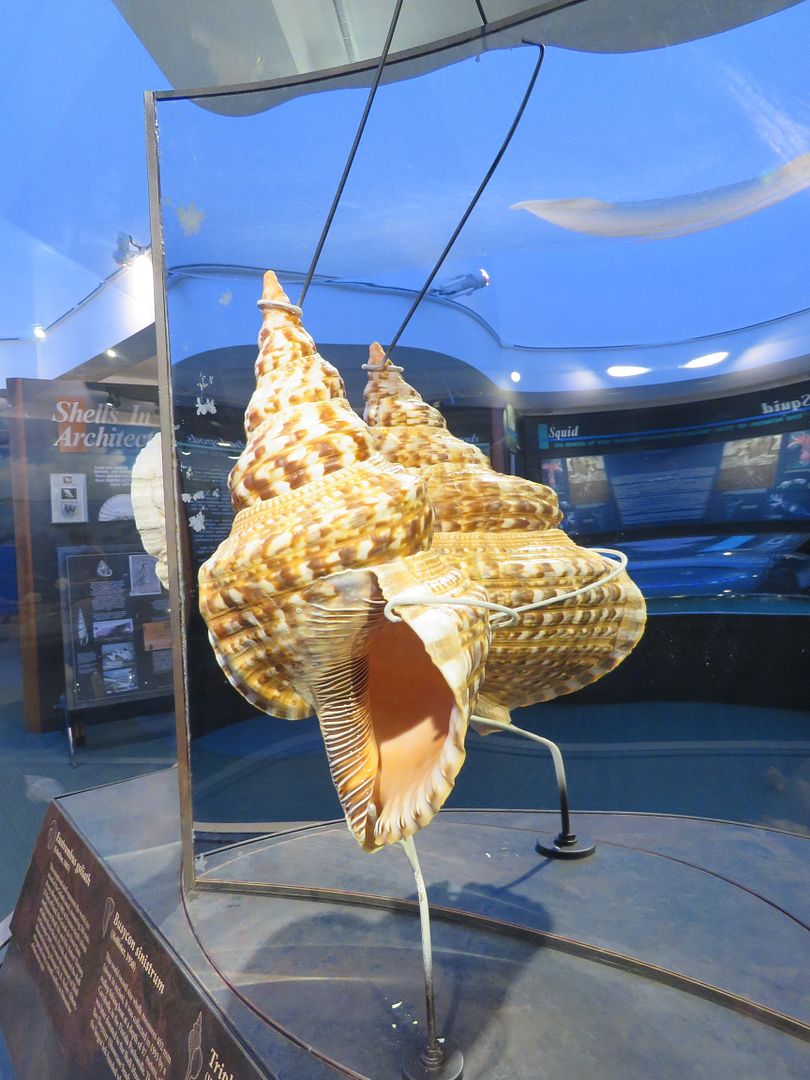

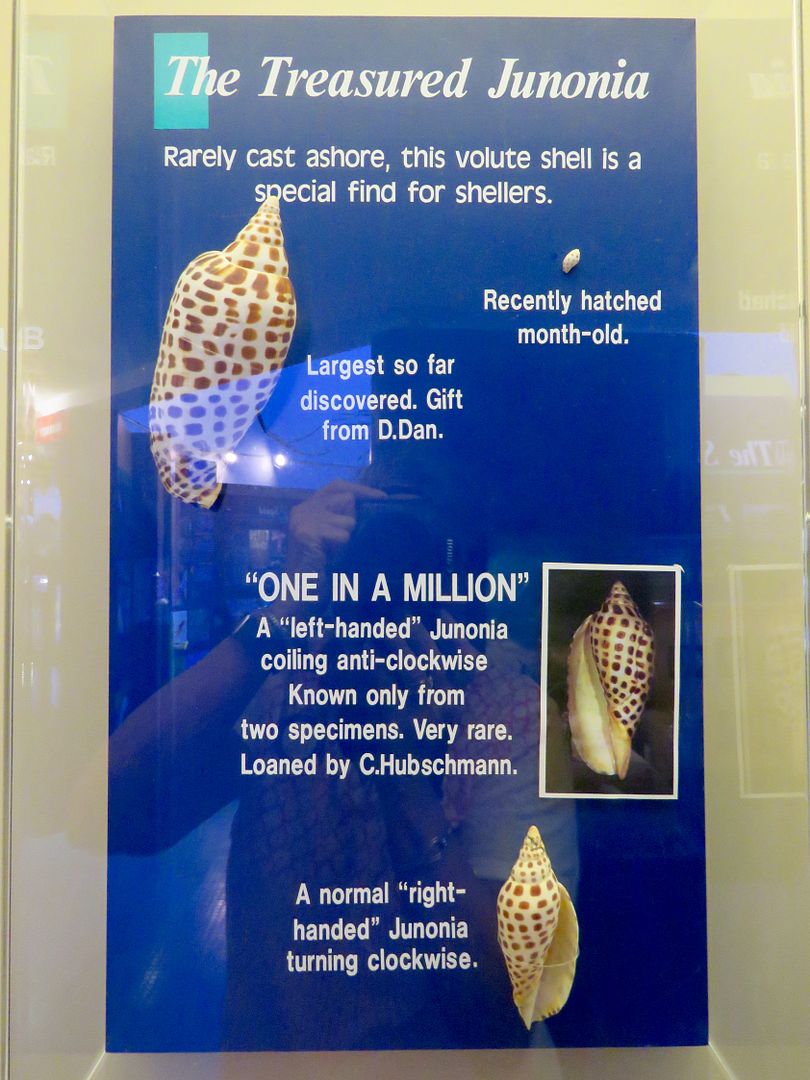
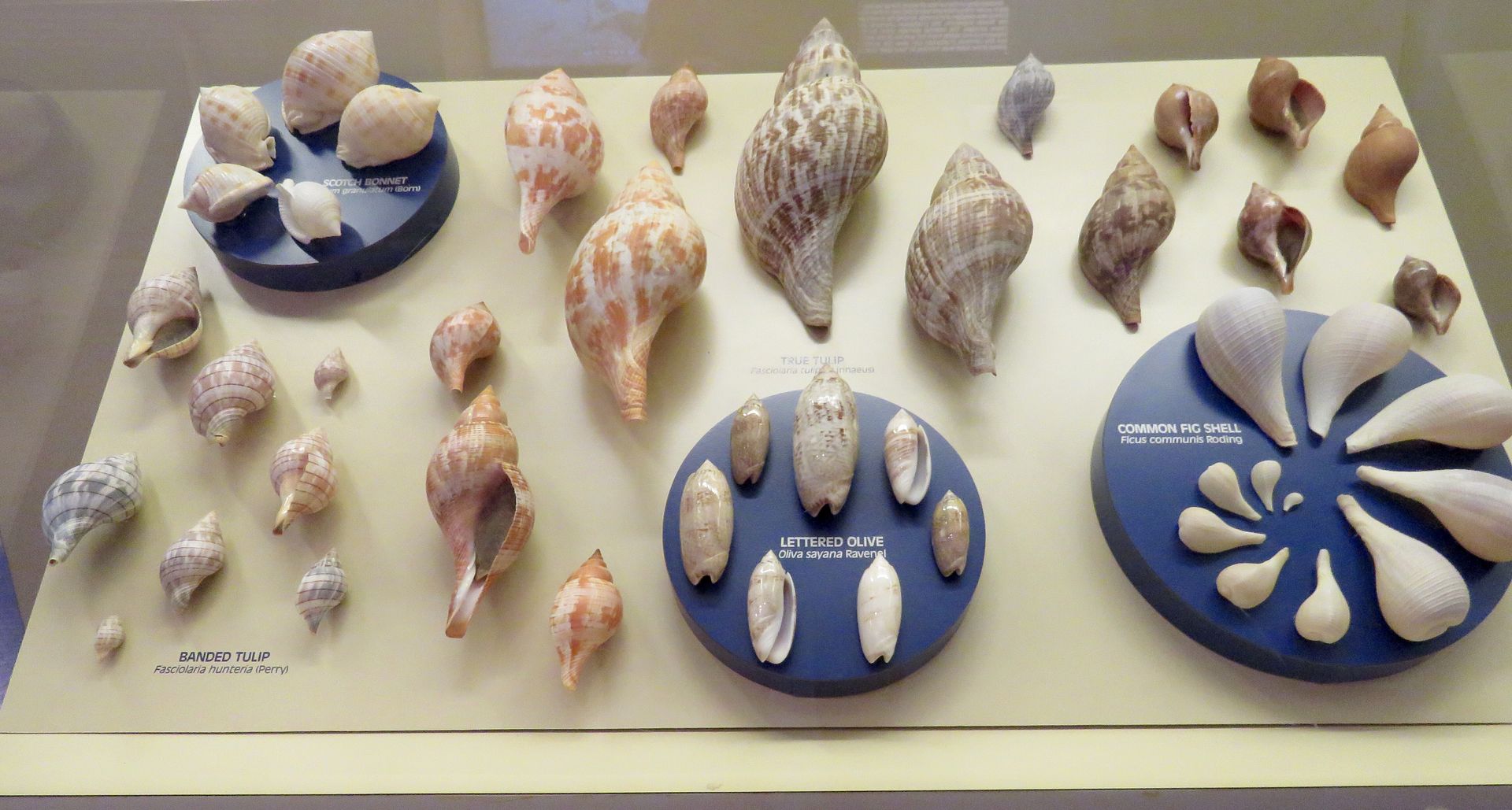
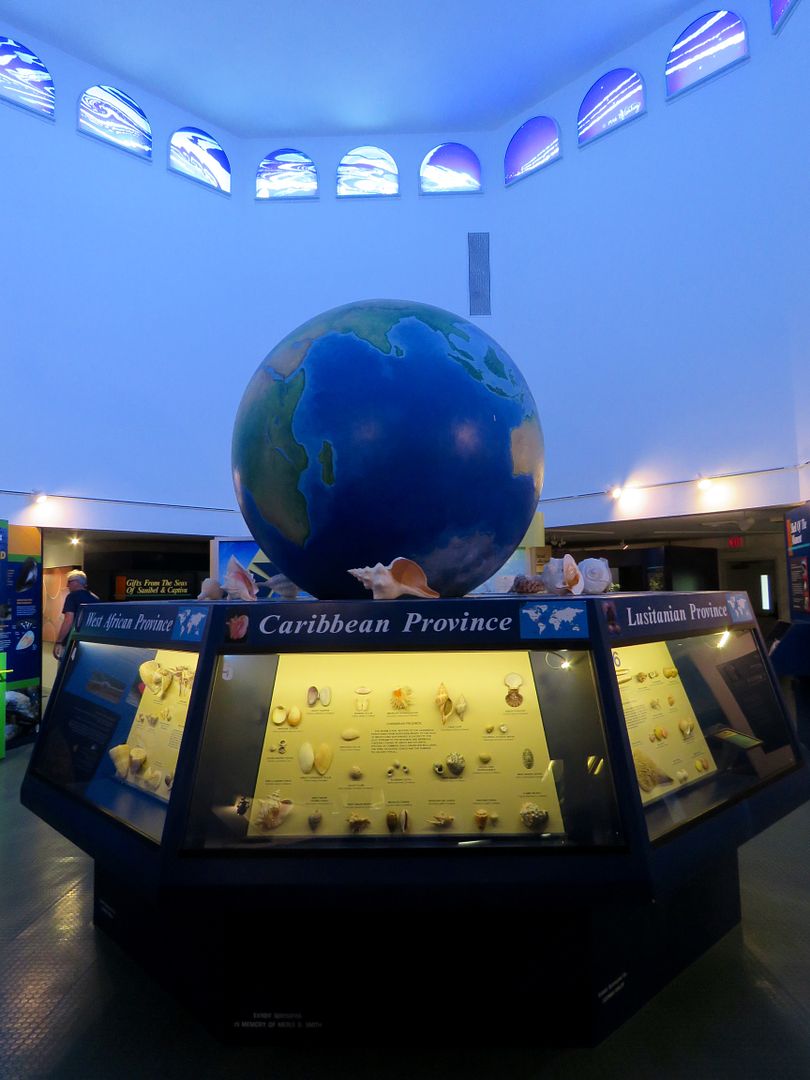
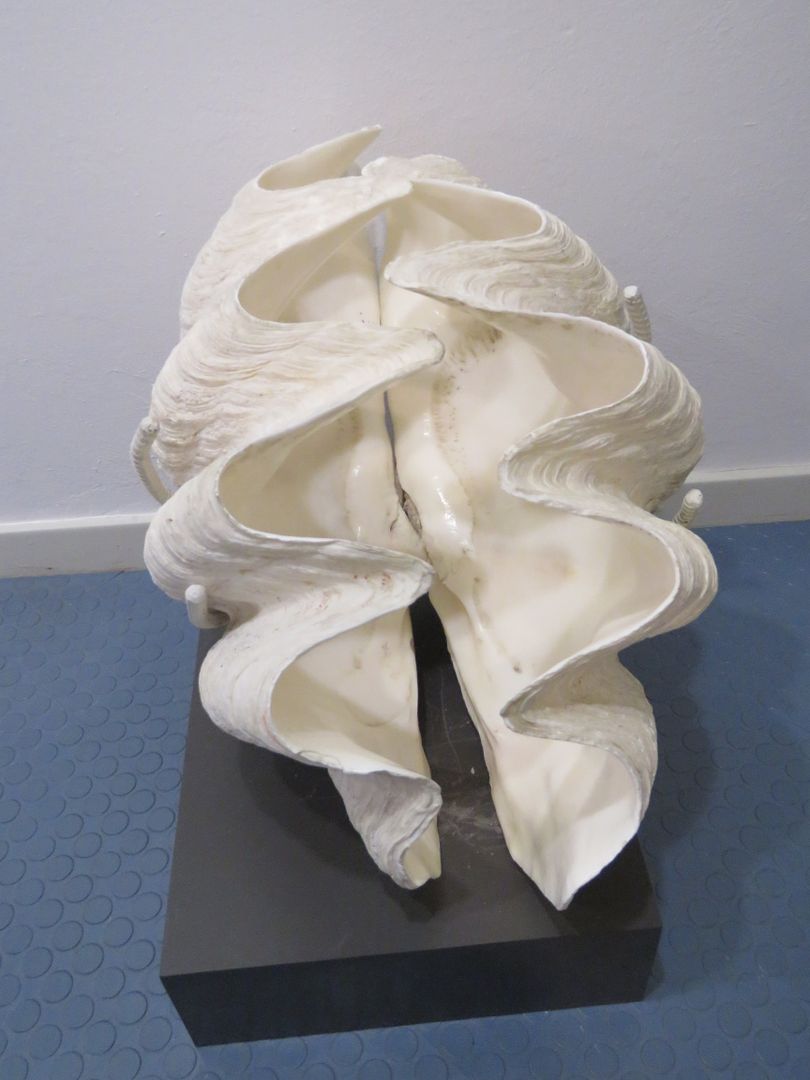

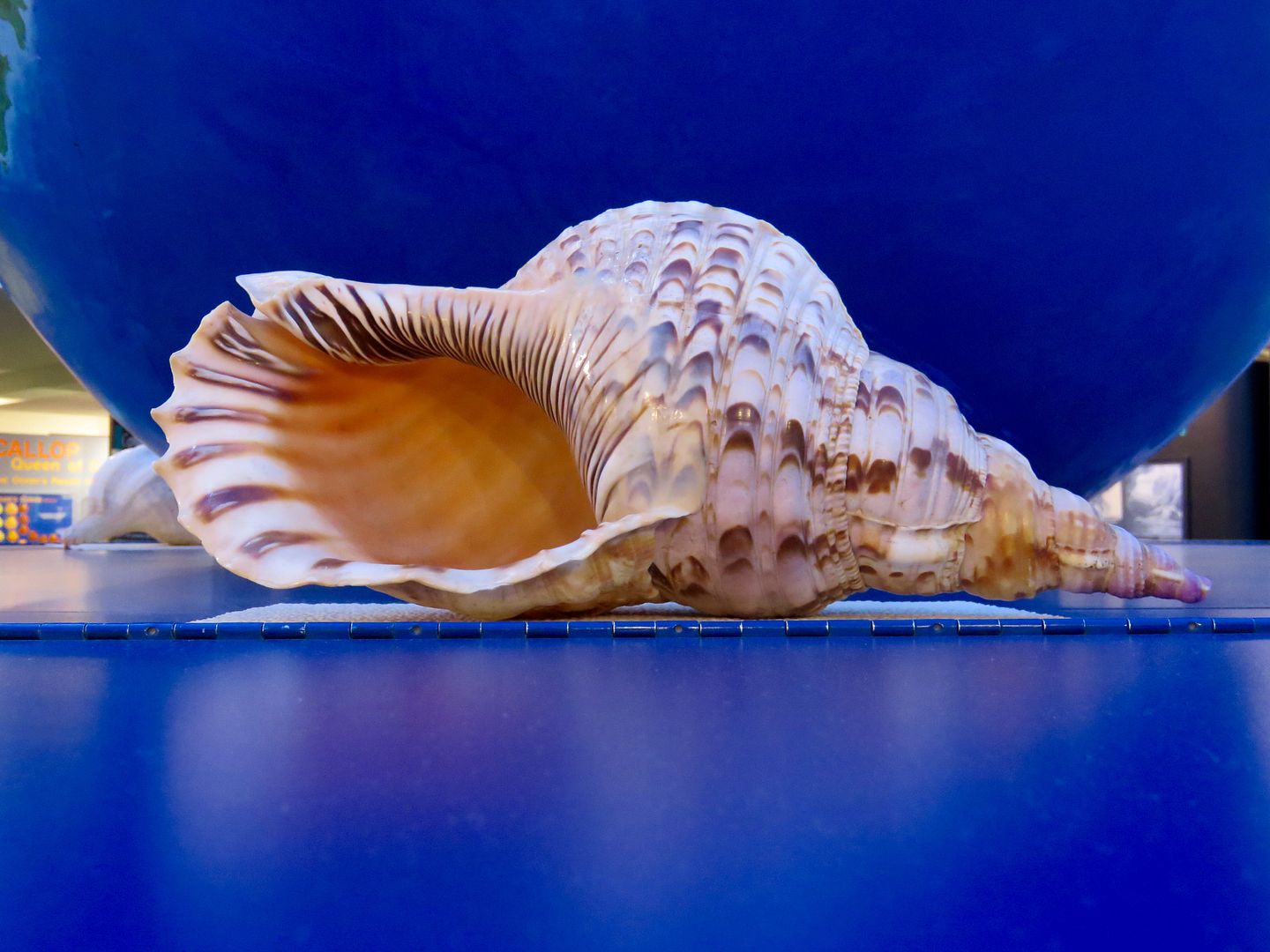
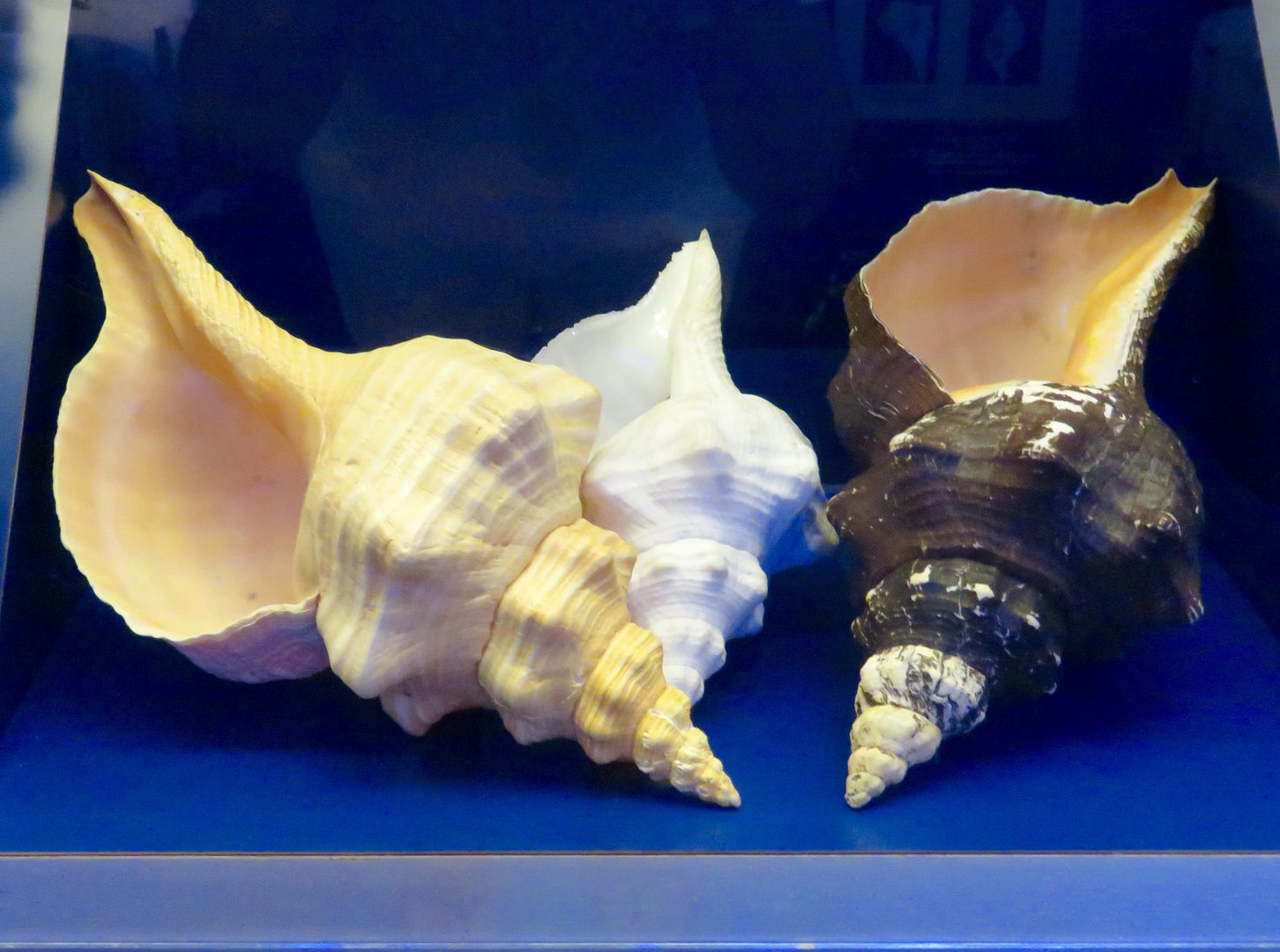
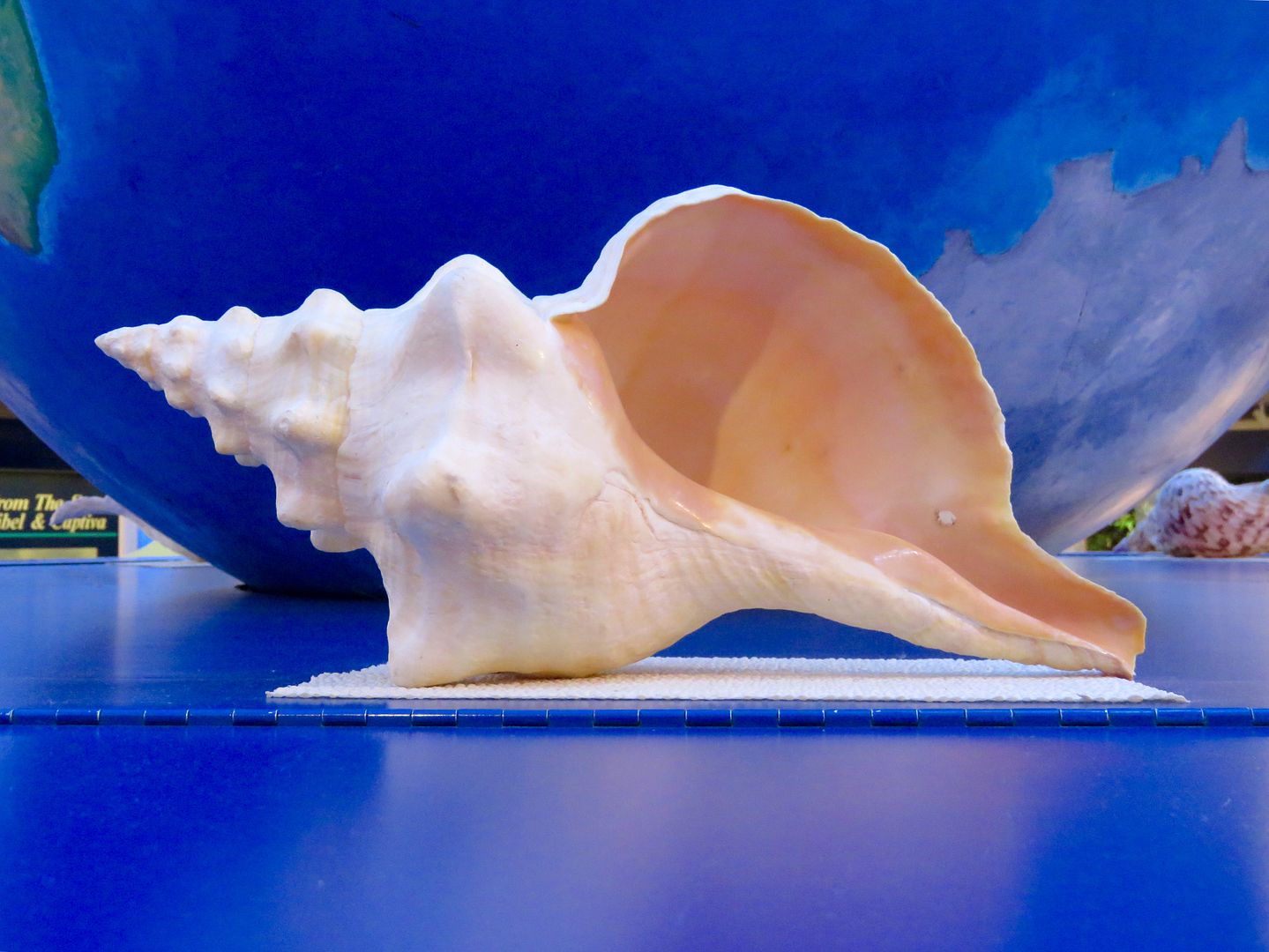

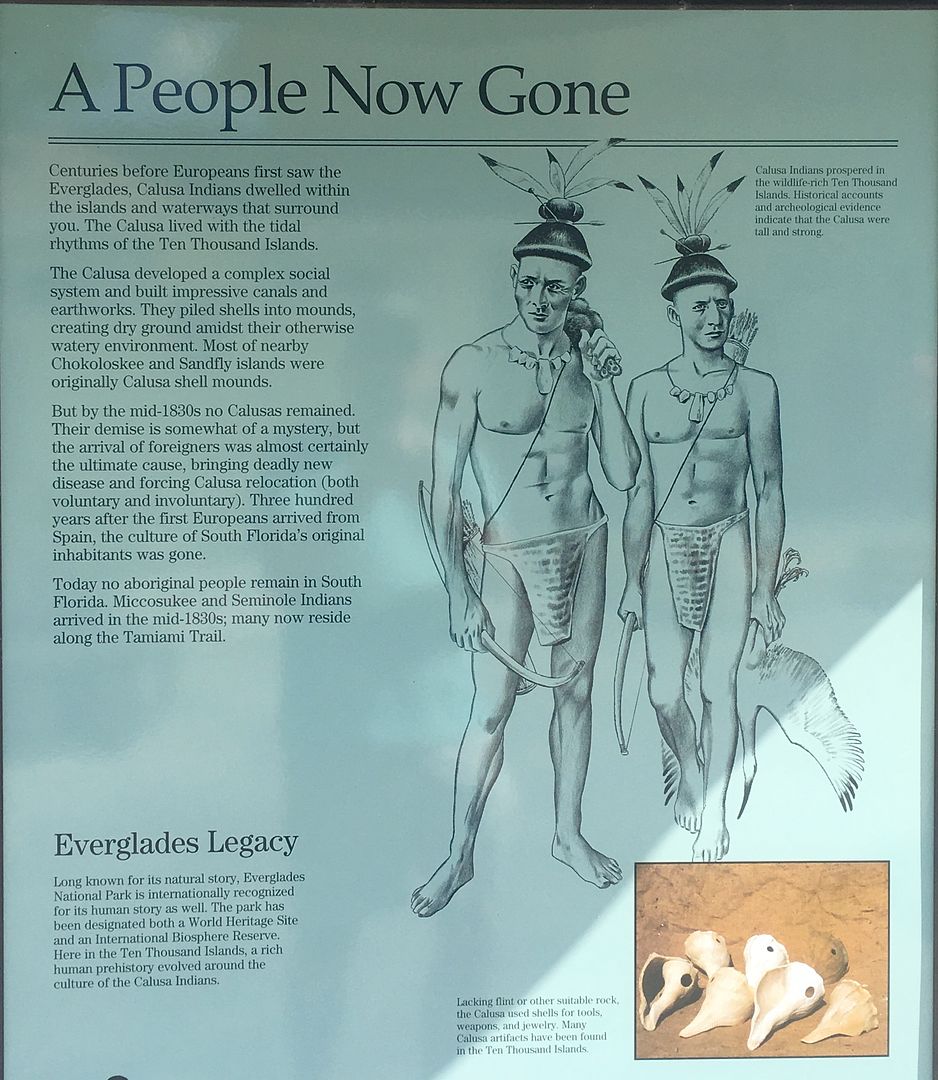
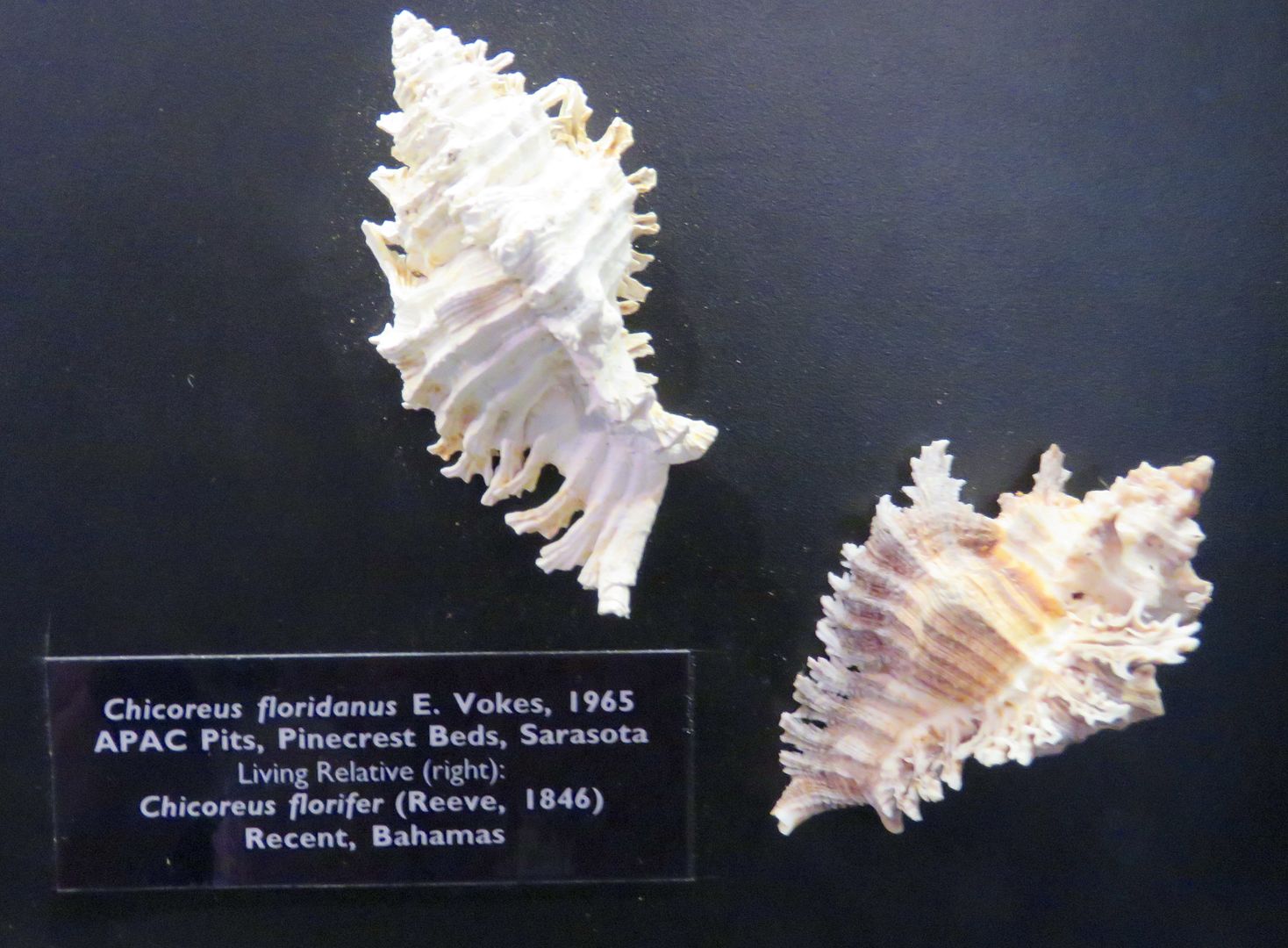


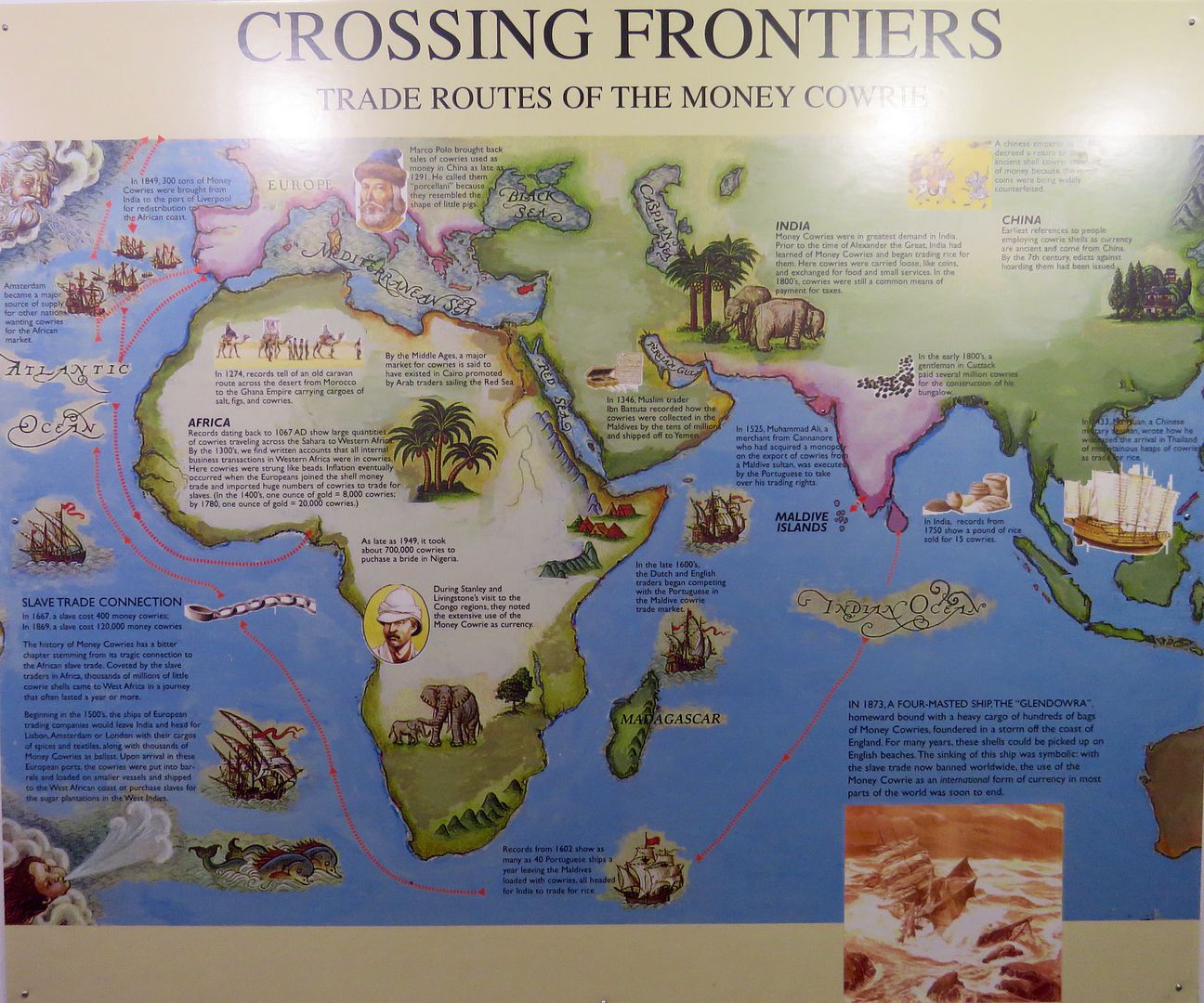
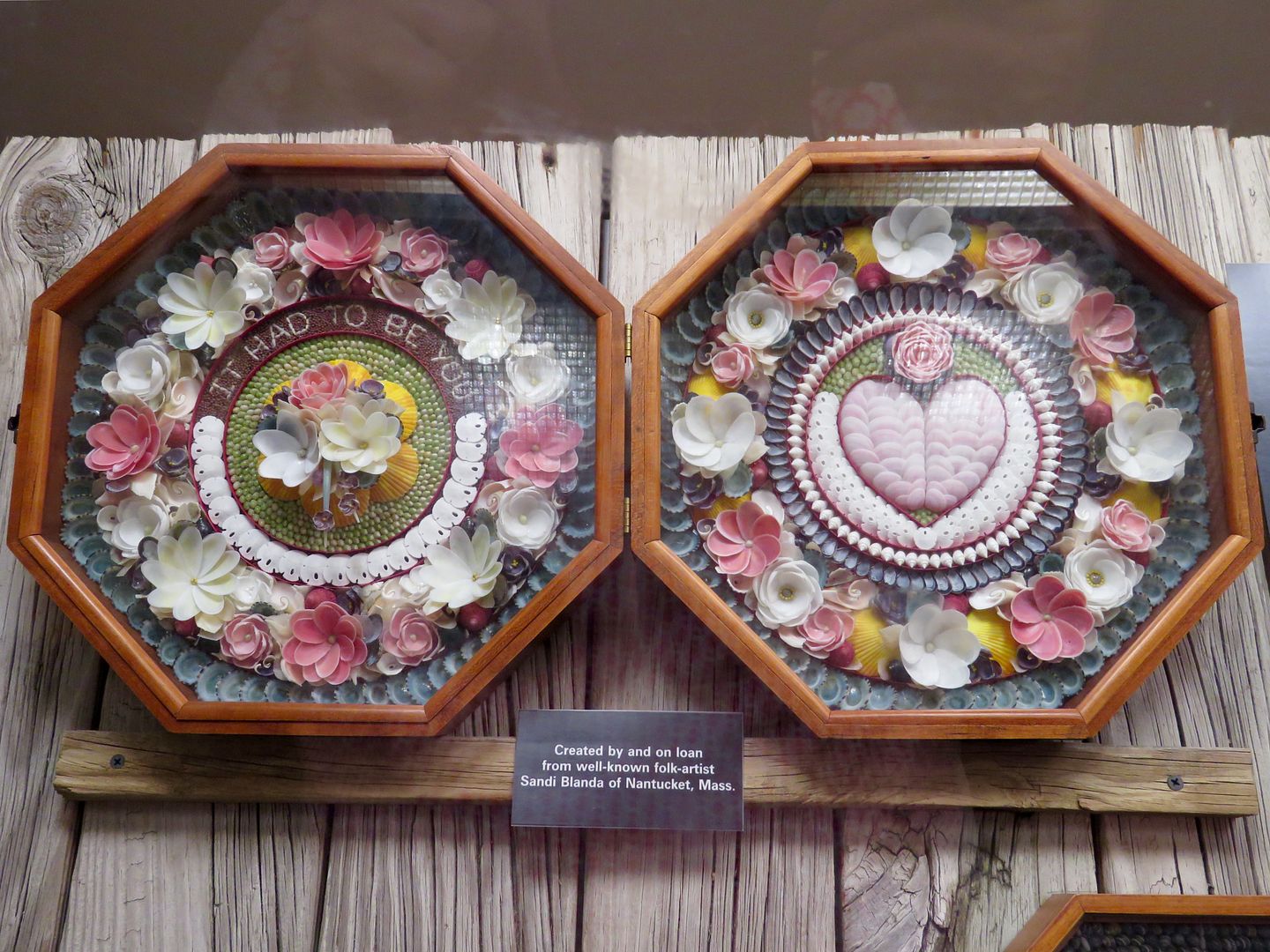

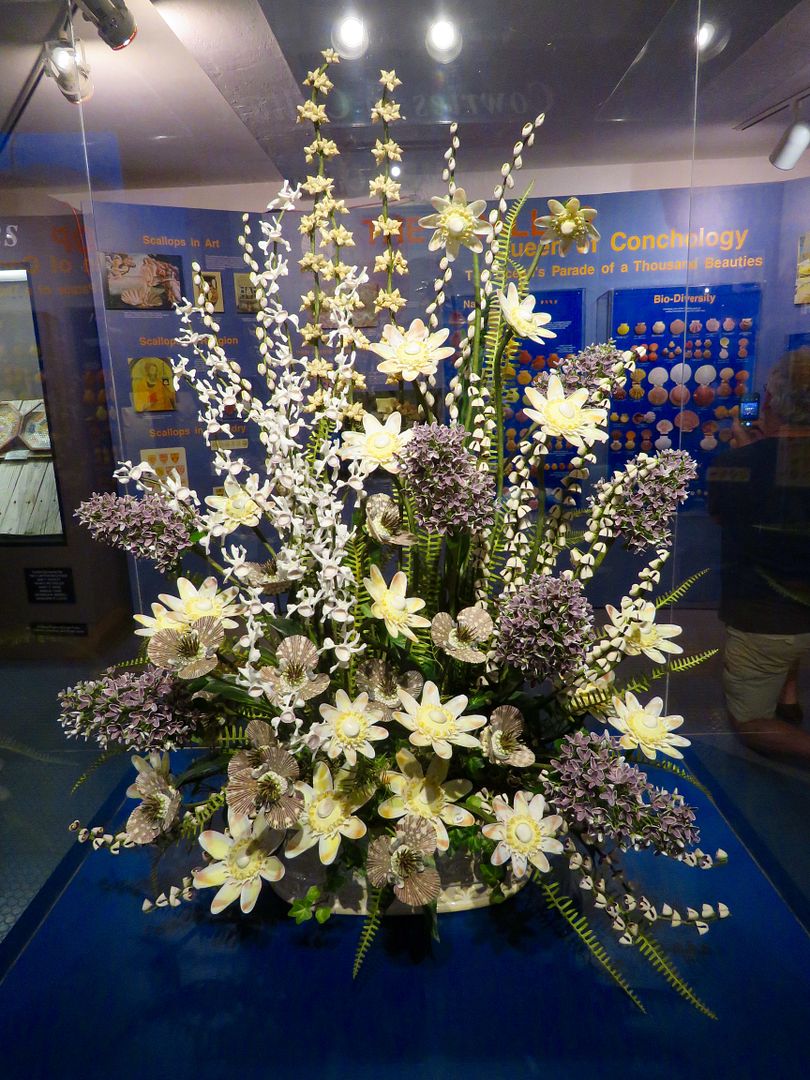
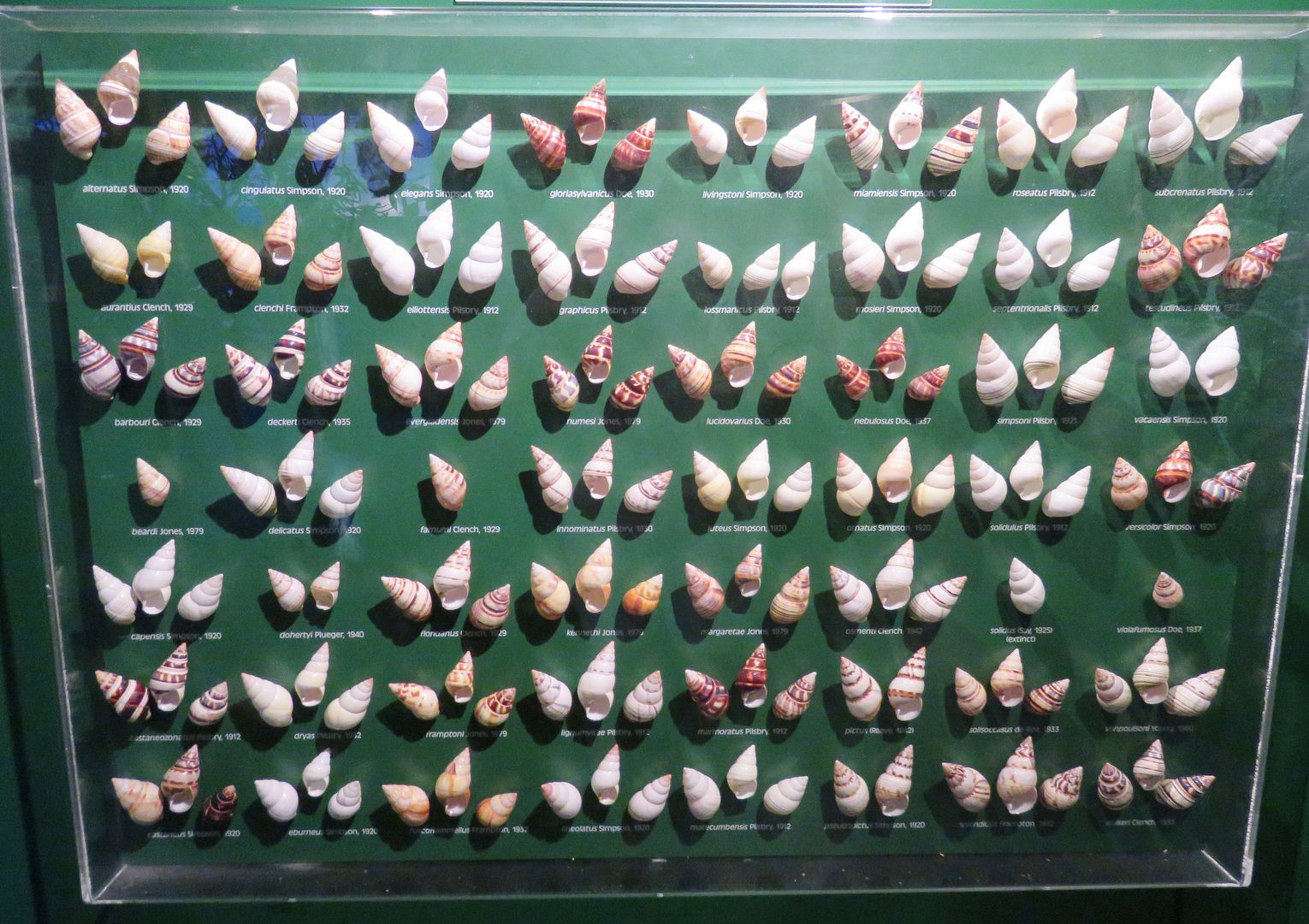

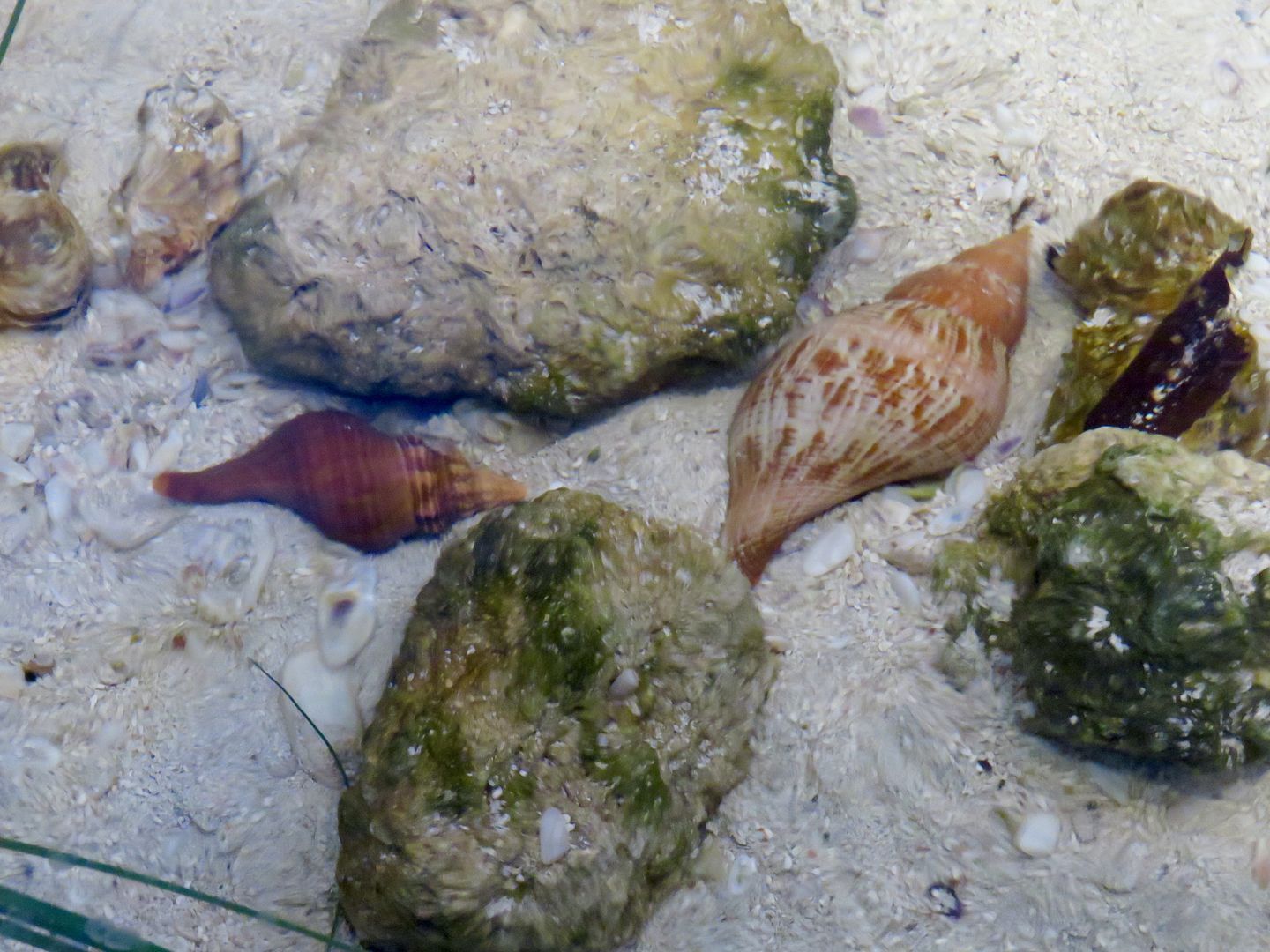
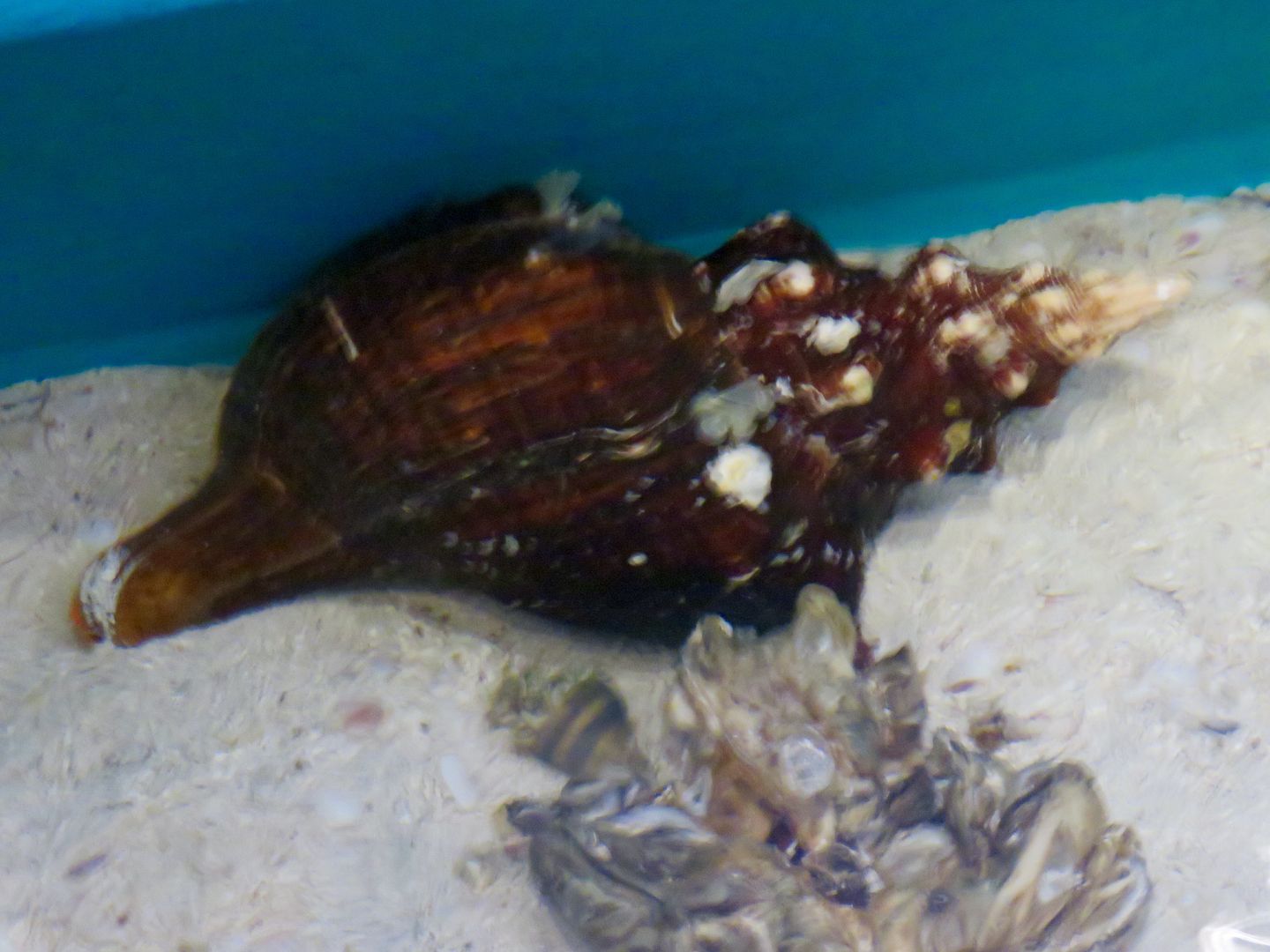
No comments:
Post a Comment